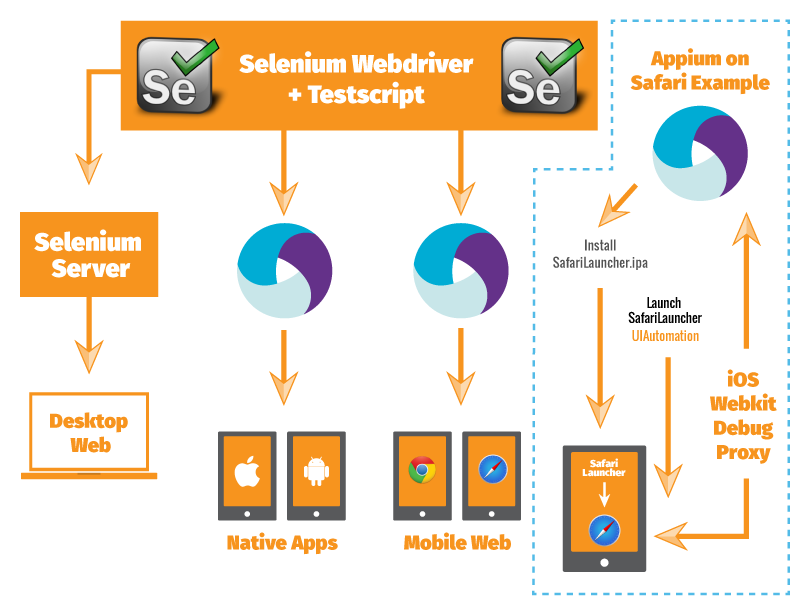“The Terminal,” directed by Steven Spielberg and released in 2004, is a heartwarming and comedic film that explores themes of human resilience, bureaucracy, and the quest for belonging. Starring Tom Hanks, Catherine Zeta-Jones, and Stanley Tucci, the film combines drama and humor to deliver a compelling story inspired by true events. This comprehensive article delves into various aspects of the film, including its plot, characters, themes, production, reception, and legacy.
Table of Contents
- Introduction
- Plot Summary
- Main Characters
- Themes and Motifs
- Production and Filmmaking
- Reception and Box Office
- Critical Analysis
- Legacy and Impact
- Conclusion
1. Introduction
“The Terminal” is a film directed by Steven Spielberg and written by Andrew Niccol and Jeff Nathanson. It stars Tom Hanks as Viktor Navorski, a man from a fictional Eastern European country who becomes stranded at New York’s JFK Airport when his homeland undergoes a sudden political upheaval. With his passport rendered invalid and his country no longer recognized by the United States, Viktor finds himself in a legal limbo, living in the airport terminal while trying to resolve his situation.
Director: Steven Spielberg
Steven Spielberg is one of the most influential and successful directors in film history. Known for his work on classics like “Jaws,” “E.T. the Extra-Terrestrial,” and “Jurassic Park,” Spielberg’s directorial style often combines emotional depth with a strong narrative drive. “The Terminal” showcases his ability to blend comedy and drama while exploring the human condition.
Writer: Andrew Niccol and Jeff Nathanson
Andrew Niccol, known for his work on “Gattaca” and “The Truman Show,” co-wrote the screenplay for “The Terminal” with Jeff Nathanson, who has written for films such as “Catch Me If You Can” and “Rush Hour 2.” Their collaboration resulted in a screenplay that deftly balances humor and pathos.
2. Plot Summary
The film begins with Viktor Navorski (Tom Hanks) arriving at New York’s JFK Airport. He is from the fictional Eastern European country of Krakozhia, which has undergone a sudden coup. As a result, Krakozhia is no longer recognized by the United States, rendering Viktor’s passport invalid and preventing him from entering the country.
Viktor’s Struggle
Viktor is left in a state of legal limbo, unable to enter the U.S. or return home. With nowhere to go and no legal status, he is forced to live in the airport terminal. Viktor adapts to his new environment with remarkable ingenuity, creating a makeshift home and finding ways to get by.
Navigating Bureaucracy
Viktor’s situation is complicated by the airport’s head of security, Frank Dixon (Stanley Tucci), who is determined to avoid trouble and expedite Viktor’s removal. Dixon’s antagonistic approach contrasts sharply with Viktor’s perseverance and kindness.
Developing Relationships
Throughout his time in the terminal, Viktor forms relationships with various airport employees, including a customer service representative named Amelia Warren (Catherine Zeta-Jones). Despite the initial challenges, Viktor’s charm and kindness win over those around him. His interactions with Amelia lead to a blossoming romance, adding another layer of complexity to his journey.
Resolution
As Viktor continues to navigate the airport’s bureaucratic maze, he learns more about himself and those around him. The climax of the film reveals the resolution of Viktor’s personal quest and his ultimate return to his homeland, bringing closure to his long and unexpected journey.
3. Main Characters
Viktor Navorski (Tom Hanks)
Tom Hanks delivers a memorable performance as Viktor Navorski, a man who embodies resilience and optimism. Viktor’s journey through the airport is marked by his resourcefulness, kindness, and determination to overcome the obstacles in his path.
Frank Dixon (Stanley Tucci)
Stanley Tucci plays Frank Dixon, the airport’s chief of security. Dixon is initially portrayed as an antagonist, focused on expediting Viktor’s removal. However, as the story unfolds, Dixon’s character undergoes development, revealing his own struggles and insecurities.
Amelia Warren (Catherine Zeta-Jones)
Catherine Zeta-Jones portrays Amelia Warren, a customer service representative who becomes romantically involved with Viktor. Amelia’s character is compassionate and empathetic, providing a romantic subplot that adds depth to the film’s narrative.
Other Key Characters
- Edward Murphy (Diego Luna): A young airport worker who becomes one of Viktor’s friends and allies.
- Nancy (Zoe Saldana): Amelia’s friend and colleague, who provides additional support to Viktor.
- Gupta Rajan (Kumar Pallana): An elderly airport worker who helps Viktor navigate the airport’s challenges.
4. Themes and Motifs
Resilience and Determination
At its core, “The Terminal” is a story about resilience. Viktor Navorski’s ability to adapt to his challenging circumstances and maintain his optimism is a central theme of the film. His journey highlights the human spirit’s capacity to endure and overcome adversity.
Bureaucracy and Red Tape
The film explores the complexities of bureaucracy and the impact of legal and administrative systems on individuals. Viktor’s struggle with airport regulations and the impersonal nature of bureaucratic institutions serves as a critique of how systems can sometimes fail to account for individual needs and circumstances.
Belonging and Identity
Viktor’s quest for belonging is a key theme in the film. Stranded in the airport, he creates a sense of home and community despite being physically and legally isolated. The film examines how identity and belonging are tied to both physical locations and human connections.
Human Connection and Compassion
The relationships Viktor forms with airport employees and fellow travelers underscore the importance of human connection and compassion. His interactions with Amelia Warren and others reveal the positive impact that kindness and empathy can have on people’s lives.
5. Production and Filmmaking
Filming Locations
“The Terminal” was primarily filmed at Los Angeles International Airport (LAX), which stood in for JFK Airport. The film’s production team meticulously recreated the airport’s interior, creating a realistic and immersive environment.
Set Design and Production Design
The set design for “The Terminal” was crucial in creating the film’s authentic airport atmosphere. The production team constructed elaborate sets to replicate various areas of an airport, including terminals, food courts, and security areas. The attention to detail in set design contributed significantly to the film’s realism.
Cinematography
Janusz Kamiński, a frequent Spielberg collaborator, served as the film’s cinematographer. Kamiński’s work captures the bustling atmosphere of the airport while also focusing on intimate moments between characters. His cinematography enhances the film’s emotional impact and visual storytelling.
Music and Soundtrack
The film’s score was composed by John Williams, another frequent Spielberg collaborator. Williams’ music complements the film’s emotional and comedic tones, enhancing the overall viewing experience. The soundtrack includes a mix of whimsical and poignant pieces that reflect Viktor’s journey.
Directorial Style
Steven Spielberg’s directorial style in “The Terminal” blends humor and drama, creating a film that is both entertaining and thought-provoking. Spielberg’s ability to balance comedic elements with emotional depth is evident throughout the film, making it a memorable and engaging experience.
6. Reception and Box Office
Critical Reception
“The Terminal” received mixed to positive reviews from critics. Many praised Tom Hanks’ performance and Spielberg’s direction, while some critics felt the film’s premise was somewhat implausible. Overall, the film was appreciated for its heartwarming story and engaging characters.
Box Office Performance
The film performed well at the box office, grossing over $219 million worldwide. Its commercial success can be attributed to its star power, engaging narrative, and Spielberg’s reputation as a filmmaker.
Awards and Nominations
While “The Terminal” did not receive major awards, it was nominated for several accolades, including a Golden Globe nomination for Tom Hanks’ performance. The film’s critical and commercial success contributed to its recognition in various award circuits.
7. Critical Analysis
Narrative Structure
The film’s narrative structure follows a classic fish-out-of-water story, with Viktor Navorski navigating the complexities of airport life. The story is presented with a blend of humor and drama, allowing for a nuanced exploration of Viktor’s experiences.
Character Development
The character development in “The Terminal” is a strength of the film. Viktor’s growth from a bewildered traveler to a resourceful and beloved figure is depicted with authenticity. The supporting characters also undergo development, adding depth to the film’s narrative.
Themes and Symbolism
The film’s exploration of themes such as bureaucracy, resilience, and human connection is enhanced by its use of symbolism. The airport serves as a microcosm of society, highlighting both the challenges and opportunities that arise from human interactions and institutional systems.
Humor and Emotion
Spielberg’s ability to blend humor and emotion is evident throughout the film. The comedic elements provide levity and entertainment, while the emotional moments offer depth and resonance. This balance contributes to the film’s overall appeal.
8. Legacy and Impact
Cultural Impact
“The Terminal” has left a lasting impact on audiences due to its engaging story and memorable performances. The film’s exploration of bureaucracy and human connection resonates with viewers, making it a relevant and thought-provoking piece.
Influence on Filmmaking
The film’s success has influenced subsequent works in the comedy-drama genre. Spielberg’s approach to blending humor with heartfelt storytelling has inspired other filmmakers to explore similar themes in their own projects.
Reception in Popular Culture
“The Terminal” has become a popular film reference in discussions about bureaucracy, immigration, and human resilience. Its depiction of Viktor Navorski’s journey serves as a poignant reminder of the challenges faced by individuals navigating complex systems.
9. Conclusion
“The Terminal” is a testament to Steven Spielberg’s ability to craft compelling and emotionally resonant stories. With a stellar performance by Tom Hanks, engaging characters, and a blend of humor and drama, the film offers a unique and heartfelt exploration of bureaucracy, human connection, and resilience.
Through its portrayal of Viktor Navorski’s journey, “The Terminal” highlights the challenges and triumphs of navigating complex systems and finding one’s place in the world. The film’s success at the box office and its impact on audiences underscore its enduring relevance and appeal.
Overall, “The Terminal” stands as a testament to Spielberg’s directorial prowess and the universal themes of perseverance and compassion. It remains a beloved film that continues to resonate with audiences and inspire discussions about the human experience.









